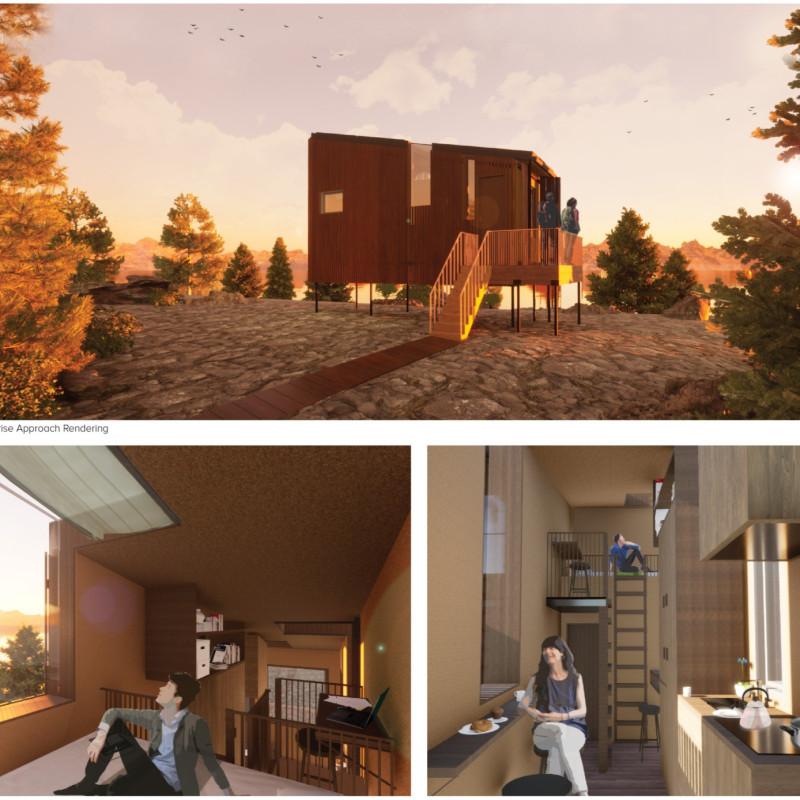5 key facts about this project
The project located on Bustard Island, Ontario, balances sustainable design with practical living spaces. It operates completely off-grid, using photovoltaic panels and low-energy electric systems. The building is elevated on helical piers, which helps prevent flooding while respecting the natural landscape. This design focuses on integrating the structure with its environment, emphasizing both durability and environmental responsibility.
Site Response
The elevation of the building allows the landscape to flow naturally beneath it, minimizing any impact on the surrounding ecosystem. The roof of the building is shaped to follow the slope of the land, creating a visual link between the architecture and its natural setting. This attention to the site reflects a modern understanding of how buildings can coexist with nature.
Spatial Organization
The layout includes distinct sections for living, dining, working, and sleeping. This structured organization aids functionality and enhances movement through the home. Different window sizes throughout provide varied views and abundant natural light, strengthening the connection between the indoor and outdoor spaces.
Sustainability Features
Sustainable elements include a rainwater collection system and an electric tankless water heater, which support responsible water use. The heating and cooling are managed by an air-source heat pump, using cleaner energy to lower carbon emissions. Energy from the photovoltaic panels is stored in saltwater batteries, which are recyclable and do not contain toxic materials.
Materiality and Finish
Materials were chosen to support low carbon goals. Vertical wood cladding and insulation corkboard finishes fit the local context while keeping embodied energy low. Structural components like plywood sheathing and helical piers are selected for their efficiency, blending practicality with sustainability.
The design showcases a thoughtful relationship with nature, marked by a roof that aligns with the landscape and large windows that allow sunlight to fill the spaces. This encourages an inviting atmosphere, reinforcing the sense of connection to the outdoor environment.



















































